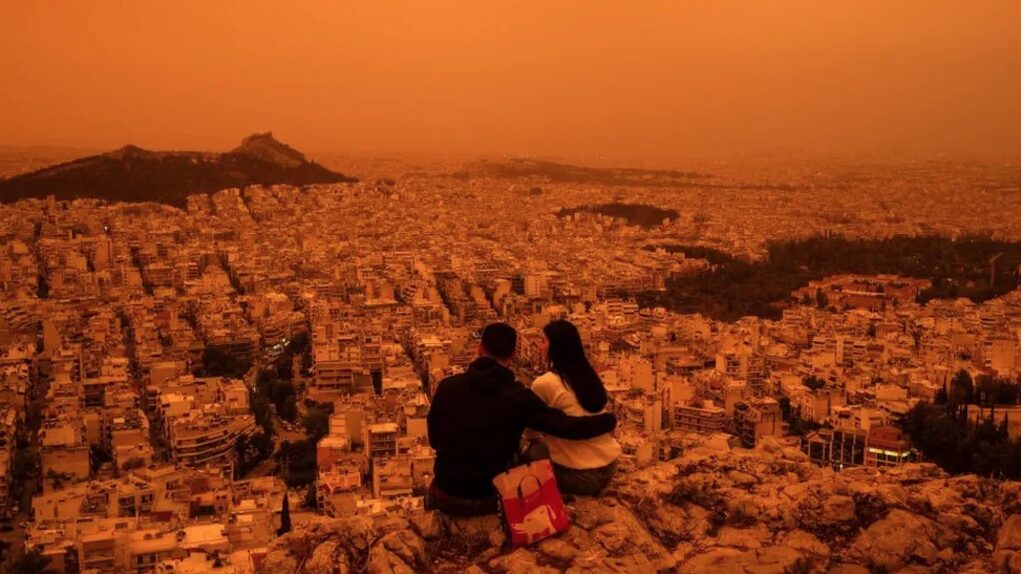
Over Athens, clouds of dust from the Sahara desert have swept in, creating a striking orange haze.
Officials claim that this is one of the deadliest occurrences of that kind to have struck Greece since 2018.
Similar clouds, encompassing parts of Switzerland and southern France, had already hit Greece in late March and early April.
According to Greece’s weather service, Wednesday will see clear skies.
Many parts of the nation now have worsening air quality, and on Wednesday morning the dust made the Acropolis in Athens invisible. Thessaloniki is in the north where the cloud has arrived.
Greeks who suffer from respiratory ailments have been advised to wear protective masks, stay indoors throughout the day, and refrain from exercising until the dust clouds pass.

Saharan dust plumes are not unusual in Europe; their frequency varies with severity, although they usually happen in the spring and autumn.
Strong southerly winds generated by an area of low pressure over Libya are to blame for the present events in the Eastern Mediterranean. Specifically on Tuesday, these winds delivered heavy concentrations of sand and dust from North Africa into Greece. Add to that the heat of the desert caused by the southerly breezes. Across the Greek mainland and islands, temperatures increased to much above average for late April, with 36.6C being recorded in the Chania district of Crete.
On Wednesday, as a cold front bringing cleaner, fresher air continues to move in from the west, the heaviest concentrations of dust will be concentrated further east. The Eastern Mediterranean will see cleaner, fresher air by the end of the week, along with temperatures that are more in line with the season.





More Stories
Bradford: A house fire results in the Death of one kid and the Hospitalisation of four more Persons
Queensland: MP Claims she was Drugged and Sexually Abused
Sadiq Khan Secures a Historic third term as Mayor of London